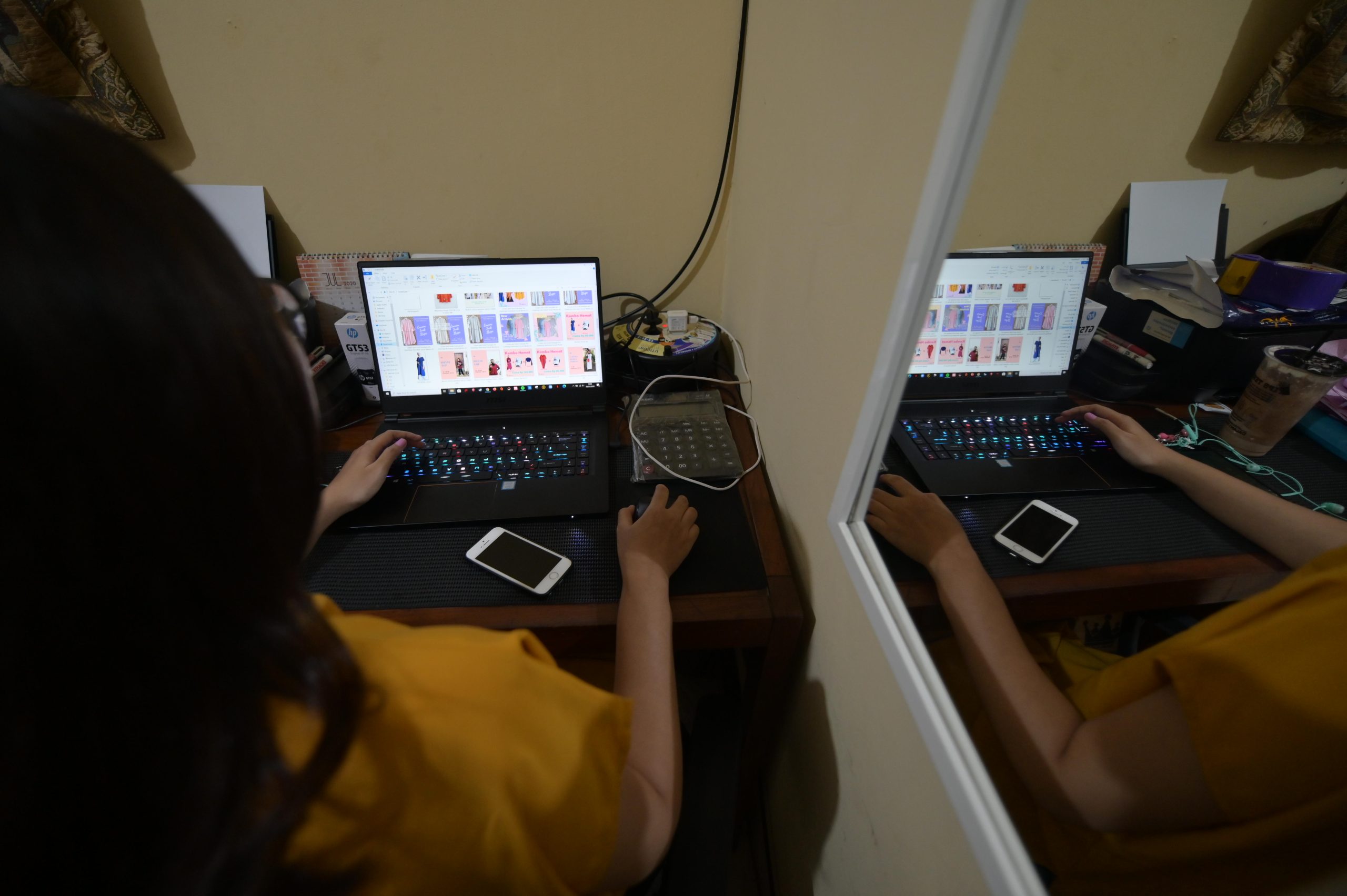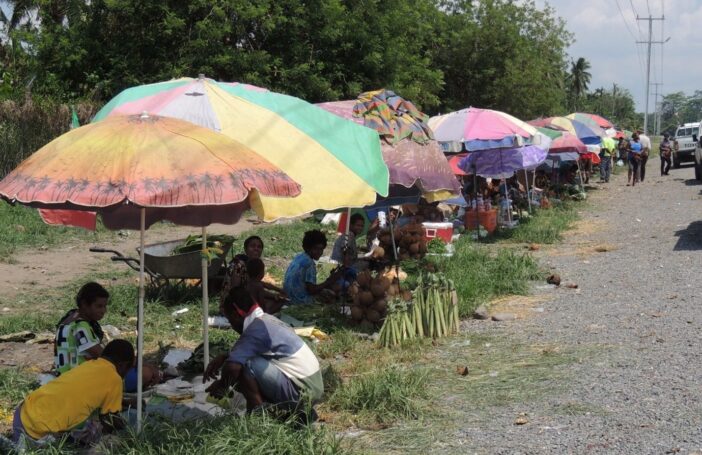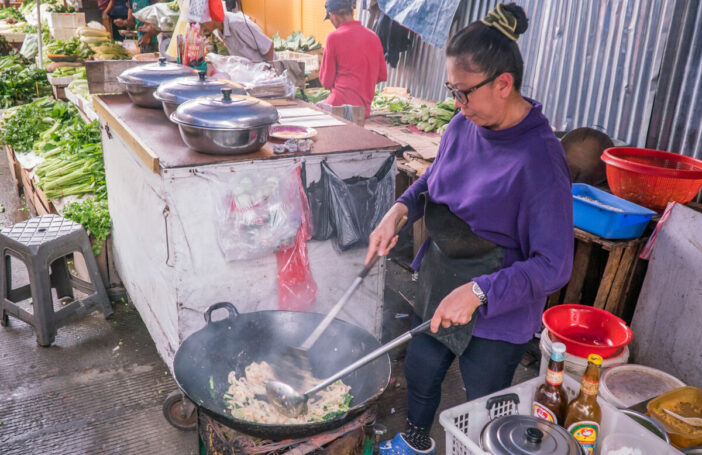The spread of broadband internet and increased smartphone affordability gave rise to online marketplaces. In 2022, gross merchandise value sold through online marketplaces reached US$3.25 trillion, an increase of 2.9% from the previous year. A substantial share of these transactions are in developing countries, led by China and India.
Online marketplaces’ distinct characteristics make them especially accessible for women. For women who are interested to run a business, opening a virtual shop is virtually free (pun intended). There are no rental agreements to sign, locations to scout, or business permits to secure. A virtual shop can be opened in minutes, with a geographical boundary that the seller can specify. In a short amount of time, a woman with no prior business experience can start offering her products to the world, and shut it down almost instantly if it does not work out.
A virtual shop is also safer because prices are agreed in advance and the seller is guaranteed payment. The online marketplace can also act as an independent arbiter when disputes arise. Maintaining a reputation is straightforward due to ratings systems, and online marketplaces allow the seller to work part-time or from the comfort of her home. This aspect is especially attractive for those women who prefer only part-time work, and important for those living where norms or safety concerns prohibit being outside or travelling alone.
Relative to its promise, there are few studies focused on women and online marketplaces. Most are limited to larger, richer countries: those with better data. This blog provides an overview of seven papers in an exciting new special issue of Asia & the Pacific Policy Studies examining the issue of women in online marketplaces from seven Asian countries, stretching from Indonesia to Kazakhstan. The articles are open access, available through the links below.
The first paper brings together data from administrative records, online surveys and phone interviews on one of the largest online platforms in Southeast Asia, GoFood. In “Gender, entrepreneurship, and coping with the COVID-19 pandemic: The case of GoFood merchants in Indonesia”, Yesim Elhan-Kayalar, Yasuyuki Sawada and Yana van der Meulen Rodgers explore gender differences in business performance and crisis mitigation strategies during COVID-19. Employment in women-owned businesses shrank more than in men-owned businesses, and women were more likely to cut personal expenditures or rely on government assistance. A sharp increase in competition from new merchants entering the platform saw service areas of incumbents and entrants shrink over time, although incumbents better maintained performance. We think this study provides us with new insights into how these marketplaces evolve and how these changes affect participants’ livelihoods.
The second paper is “Willingness of women-led businesses in Pakistan to join formal e-commerce platforms”, by Syed M. Hasan, M. Raza Mustafa Khan and Verda Arif. Many female entrepreneurs have misconceptions and incomplete information about formal online marketplaces, which pushes them towards informal platforms like social media. These are not designed for business transactions and bring unnecessary risks, for example, no formal records of transactions or redress systems. This paper reports the findings from a randomised field experiment providing better information on formal online marketplaces to 300 women entrepreneurs in urban centres in Pakistan. Better informed women were 10 percentage points more likely to join formal online marketplaces, highlighting the role that incomplete information and misperceptions can play in deterring women from participating in these oftentimes more beneficial livelihood options.
In “Women online: A study of Common Service Centres in India using a capability approach”, Meenakshi Rajeev and Supriya Bhandarkar evaluate an Indian government initiative where the government selects individuals to become village-level entrepreneurs, who receive a small payment to help other villagers access services through the Common Service Centres (local access points for electronic welfare programs and banking services). The main bottlenecks for women to participate appear to be lack of internet and electricity infrastructure, the significant start-up capital required to purchase online devices, printers and biometric machines, and a lack of computer skills. Programs like this may be limited without properly understanding and addressing any inherent barriers to participation.
The fourth paper is “Harnessing the potential of online marketplaces in the Philippines: Insights from the National Information and Communications Technology Household Survey”, by Connie Bayudan-Dacuycuy and Lawrence B. Dacuycuy. It introduces the Philippines’ first nationally representative survey to understand the digital economy, and investigates gender disparities in participation and income. Men generally outperform women in online sales, as is often found in traditional marketplaces. Factors associated with success in online sales include selling on your own site rather than on a platform, research skills, awareness of cybersecurity, and the type of products. One sector stands out as more profitable for sellers: financial products and services. We think that descriptive analysis based on specially designed datasets like this is invaluable for understanding the basic facts about markets and their participants, before moving on to think about policy problems and solutions.
The fifth paper in the special issue is “Female rural–urban migrants and online marketplaces in emerging economies: Evidence from Thailand and Vietnam”. In this paper, Trung Thanh Nguyen and Manh Hung Do measure the impacts of participating in online marketplaces among rural–urban women migrants in Thailand and Vietnam. Education levels, asset ownership and exposure to technology at home are positively correlated with participation, which increases consumption and reduces poverty. This paper also provides suggestive evidence that participation in online marketplaces increases inequality, specifically the income gap between the better and worse off.
Kazakhstan is a country where much less research has been done, and the sixth paper is a unique mixed-methods study including a new survey of women as consumers and sellers in online marketplaces. In “Kazakhstani womenʼs participation in online marketplaces: Benefits and barriers”, Anel A. Kireyeva, Zaira T. Satpayeva, Gaukhar K. Kenzhegulova, Dana M. Kangalakova and Aruzhan Jussibaliyeva carefully document the benefits of and barriers to participation on both the demand and supply sides, and find that the pandemic accelerated women’s use of online marketplaces for daily transactions. Despite this, shopping experiences are still not safe and the lack of high-speed, affordable internet connections remains a constraint for many and for the future of online marketplaces.
The final paper of the special issue, by Niken Kusumawardhani, Anna Falentina, Palmira Bachtiar and Veto Indrio, examines how a key part of engaging in online marketplaces, specifically internet use, might generate broader development benefits. “Internet usage among women-led micro and small enterprises and household membersʼ use of the internet at home: Evidence from Indonesia during the COVID-19 pandemic” introduces new data tracking micro and small enterprises from the city of Yogyakarta before and during the pandemic. Internet use by female entrepreneurs is positively and strongly associated with other household members adopting the internet for school-related purposes. Unpacking this finding qualitatively, women entrepreneurs who use the internet intensively appear to also be more effective in persuading other household members to use internet technology for things like education. Thus, online literacy and capability to engage in online marketplaces could be helpful in potentially mitigating the widely documented learning losses associated with the shift to home schooling during the pandemic.
Overall, these papers show that womenʼs participation in online marketplaces appears, on balance, to provide positive economic and social benefits. Governments have a role to play in creating enabling regulations and providing training and information and, in some cases, start-up capital. Online marketplaces are here to stay. With the right policies, women can significantly benefit from engaging in them.
Read the full special issue ‘Social and economic impacts of online market places on women in Asia’ in Asia & the Pacific Policy Studies journal.





